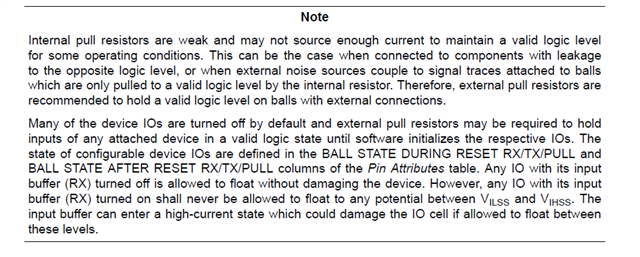Tool/software:
Hi Dear TI Experts,
Regarding the handling of unconnected signals that are not specified in the Pin Connectivity Requirements.
For the following unused signals, is an open-collector configuration sufficient, or do they require a pull-down resistor?
or VSS connection?
1.SPI Signal
SPI0_CLK
SPI0_D0
SPI0_D1
SPI0_CS0
SPI0_CS1
2.MCAN Signal
MCAN0_RX
MCAN0_TX
MCAN1_RX
MCAN1_TX
3.UART Signal
UART0_CTSN
UART0_RTSN
UART0_RXD
UART0_TXD
4.MCU_OSC
MCU_OSC0_XI
MCU_OSC0_XO
5.MCU UART Signal
MCU_UART0_RXD
MCU_UART0_TXD
MCU_UART0_CTSN
MCU_UART0_RTSN
6.MCU System Signal
MCU_RESETSTATZ
7.System Signal
EXTINTN
8.MCU System Signal
MCU_SAFETY_ERRORN



